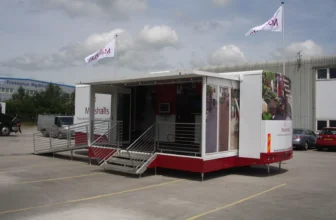
Startups entering multilingual markets often assume that translation is enough. What they miss is the power of language: a 2020 CSA Research survey of 8,709 consumers across 29 countries found that 76% prefer to buy products when information is provided in their native language, and 40% won’t buy from sites that aren’t localized.
Table of Contents
Overlooking Deep Cultural Contexts: It’s Not Just About Language

Source: eu-startups.com
Startups often translate content but fail to localize for culture. Translation changes words. Localization adapts meaning, tone, imagery, idioms, humor, and emotional nuance. Without this, even accurately translated content can fall flat or offend.
Key Cultural Differences That Affect Market Entry
| Area | Cultural Variation Example | Startup Impact |
| Colors & Symbols | Red means luck in China but danger in the U.S. | Branding may miscommunicate intent |
| Tone of Messaging | Directness is respected in Germany but can seem rude in Japan | Customer service tone must be culturally aligned |
| Humor | Sarcasm works in the UK, but may confuse others | Marketing campaigns lose engagement |
| Buying Behavior | Group decisions in Korea vs. individual in the U.S. | Product pages may require more peer signals |
| Formality Levels | First names used in the U.S., titles preferred in France | Sales messaging must reflect status awareness |
Real Example
When KFC entered China, their “Finger Lickin’ Good” slogan was mistranslated to “Eat your fingers off.” While funny in retrospect, the error showed a lack of cultural sensitivity and risked brand damage.
Key Takeaway
Language is only part of the equation. Startups that overlook local culture often lose customer trust before making a single sale.
Failing to Invest in True Localization (Not Just Translation)

Source: softteco.com
Startups often translate their website or app but overlook localization, which adapts messaging, visuals, tone, and functionality for each specific market. This creates a disconnect between brand and audience.
What Translation Misses
| Element | Result Without Localization |
| Local Slang or Idioms | Confusing or awkward phrasing |
| Currency and Units | Users abandon checkout |
| Legal Terms | Mistrust or compliance violations |
| UX/UI Preferences | Friction from unfamiliar layout or navigation |
| Support Language | Misunderstandings during customer interactions |
Missed Opportunity Example
Clairol launched a hair product called “Mist Stick” in Germany. The word “mist” in German means “manure.” The product flopped, not because of quality, but because of overlooked language context.
Why This Matters
Cultural misalignment damages trust. Even basic actions like button text, delivery time phrasing, or product naming can confuse or offend if not localized.
Practical Solution
Use experts trained in regional context. Services like onsite interpretation services allow startups to communicate accurately during live meetings, user testing, or negotiations.
Key Takeaway
Localization is not an extra feature. It is a business requirement for startups that want to be taken seriously in multilingual markets.
Assuming In-House Knowledge Is Enough

Source: forbes.com
Startups often rely solely on internal teams to plan and execute international expansion. While this may seem cost-effective, it limits access to crucial on-the-ground insights and introduces blind spots in unfamiliar markets.
What Internal Teams Often Miss
| Area | Common Gap in Internal Planning |
| Regional Buyer Behavior | Misjudging decision-making patterns |
| Local Competitor Tactics | Underestimating regional marketing strategies |
| Legal Documentation | Misinterpreting licensing and contract norms |
| Channel Preferences | Ignoring dominant local platforms or formats |
| Media Consumption Habits | Using irrelevant content formats or timing |
Case in Point
Best Buy failed to expand successfully in the UK. The U.S.-based team assumed large-format stores would appeal across Europe. In reality, UK consumers preferred compact retail spaces and online-first experiences. The misalignment led to store closures within two years.
Why Internal Teams Struggle
Without regional specialization, internal teams may base decisions on domestic market logic. This leads to misjudgments in pricing, packaging, promotion, and distribution.
Fix That Works
Consult local market researchers, partner with regional consultants, or contract localized agencies. External perspectives identify patterns and risks your core team cannot see.
Key Takeaway
Startups that rely only on internal knowledge expand based on assumptions, not facts. External input is not optional when entering a foreign market.
Neglecting Multilingual Customer Support and Communication

Source: forbes.com
Startups that expand globally without offering support in the local language lose trust quickly. Customers expect clear, responsive service in their native language. Anything less signals a lack of commitment.
🧾Critical Support Gaps in New Markets
| Support Element | Impact When Missing Local Language |
| Email or Chat Support | Delays, confusion, unresolved issues |
| Help Center Content | High bounce rates and abandoned sessions |
| Onboarding Instructions | Misuse or failure to adopt the product |
| Social Media Engagement | Brand feels disconnected or unapproachable |
| Voice Support or IVR | Calls dropped or customers exit the funnel early |
Missed Opportunity Example
In Brazil, many global apps failed to offer Portuguese support early on. This created barriers in onboarding and retention. Local competitors filled the gap, gaining rapid user loyalty.
Why It Fails
Generic English-only support assumes users are willing to self-translate or figure things out. In practice, they leave and switch to brands that speak to them directly.
What Works
Hire multilingual support agents or outsource to providers with regional language fluency. Update all customer-facing materials in local language, including automated chat and help docs.
Key Takeaway
Support is not a back-end function. In multilingual markets, it is a front-line signal of credibility. Language-appropriate support drives retention and reputation.
Skipping Local Talent: Why You Need People on the Ground

Source: forbes.com
Many startups expand into new markets using remote teams from headquarters. This limits real-time insight into local preferences, weakens brand presence, and slows adaptation.
Key Advantages of Local Hiring
| Function | How Local Talent Strengthens Market Entry |
| Product Feedback | Immediate cultural relevance checks |
| Sales and Partnerships | Faster trust-building with local networks |
| Compliance and Documentation | Accurate navigation of local business norms |
| Community Engagement | Real alignment with social values and expectations |
| Marketing Tone | Authentic messaging and channel selection |
Case in Point
When Amazon entered India, it built a dedicated local team. That team adapted logistics, payment options, and customer communication. Without these local hires, Amazon would have struggled against entrenched competitors.
What Startups Miss
Remote teams lack cultural fluency, legal awareness, and informal market knowledge. This creates friction that local competitors do not face.
How to Fix It
Hire local employees early. Even a small team can identify pitfalls before launch. Use recruiters familiar with the region or Employer of Record (EOR) platforms to onboard talent legally.
Key Takeaway
Local teams are not just staff. They are your market translators, risk managers, and cultural guides. Without them, your startup enters blind.
Choosing Scale Before Understanding: The Scaled Expansion Trap

Source: startupvalley.news
Startups often scale too quickly in new markets, assuming success will mirror their home region. Without full market understanding, this results in wasted resources and poor product-market fit.
What Premature Scaling Looks Like
| Action | Risk Introduced |
| Rapid Store or Office Expansion | High overhead before revenue stabilizes |
| Large Ad Spend Early On | Poor ROI from misaligned messaging |
| Launching Full Product Suite | Confuses users unfamiliar with core features |
| Hiring at Scale Without Demand | Burn rate spikes before traction |
| Ignoring Regional Feedback Loops | Slow response to local user needs |
Case in Point
Starbucks launched over 80 stores in Australia without adapting to local café culture. The strategy backfired. Customers rejected the chain’s format and pricing. Starbucks later closed most locations and retrenched with a localized approach.
What Went Wrong
Scaling assumes demand, but early misreads of cultural preferences, price sensitivity, and consumption habits often invalidate that assumption.
Smarter Approach
Start with a lean launch. Offer one core product or service, test messaging, gather customer feedback, and iterate. Use local talent and data to guide expansion pacing.
Key Takeaway
Scale is not a shortcut to success. In multilingual markets, slow, informed entry builds stronger long-term growth than rushed rollouts.
Ignoring Local Compliance and Data Privacy in Multilingual Markets

Source: entrepreneur.com
Startups entering new regions often overlook legal differences, especially in consumer data, labor laws, and product standards. This leads to fines, blocked operations, or reputational damage.
Common Compliance Areas Overlooked
| Category | Risk When Ignored |
| Data Protection Laws | Legal penalties and user distrust |
| Advertising Regulations | Banned content or platform restrictions |
| Taxation Rules | Unexpected liabilities or delayed launches |
| Product Labeling Standards | Market entry denied due to packaging issues |
| Employment Contracts | Violations of labor rights and legal exposure |
Case in Point
In 2018, WhatsApp was fined €50 million in France for not meeting GDPR transparency requirements. The issue was not the product but failure to explain data practices in localized terms.
Why Startups Miss This
Legal teams often focus on home country standards. But multilingual markets have unique compliance frameworks that affect marketing, operations, and sales differently.
What Works
Hire local legal advisors or compliance consultants. Update all terms of service, privacy policies, and contracts to meet regional standards in both language and law.
Key Takeaway
Legal compliance is not just a box to check. In multilingual markets, it must be multilingual, market-specific, and continuously monitored.
Conclusion
Most startups entering multilingual markets miss critical details. They rely on translation instead of full localization. They scale without understanding local behavior. They ignore legal rules, skip hiring local talent, and assume internal knowledge is enough.
Each of these mistakes creates friction, reduces trust, and slows growth. The solution is clear. Treat culture, language, support, and compliance as required steps. Execute with precision, not assumptions. This is how startups build lasting success in global markets.







